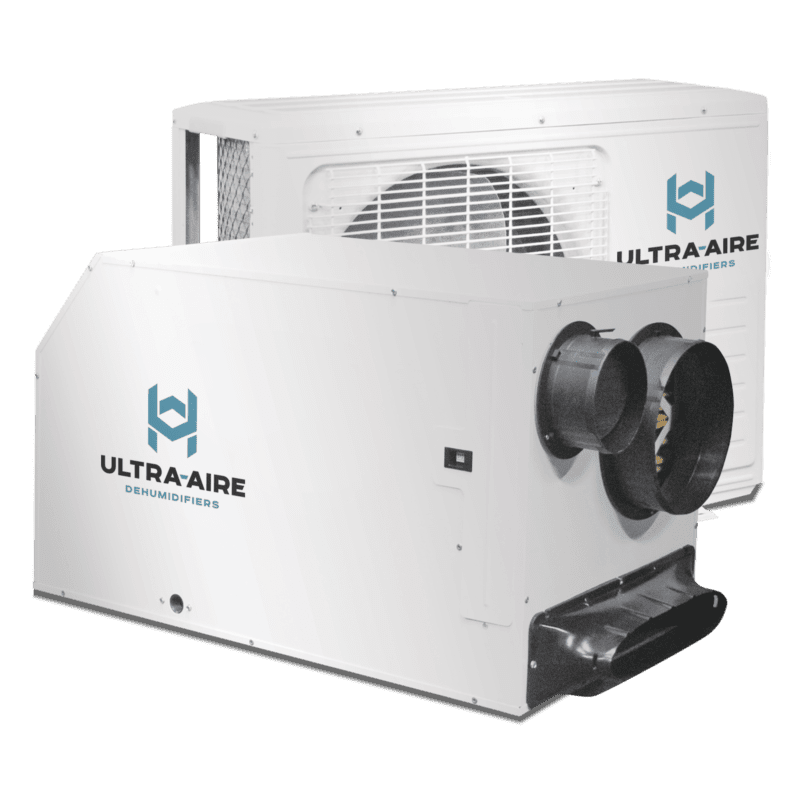The natural process of a refrigerant whole house dehumidifier is to release some heat back into the living space. This is the result of using electricity to power the dehumidifier. That energy (heat) needs to go somewhere. An A/C unit releases that energy (heat) outside by placing the condenser and compressor outside of the structure and a dehumidifier releases that energy (heat) back into the allotted space in order to help the drying process.
Temperature and Humidity
The temperature increase in the supply or discharge air, compared to the incoming air stream, will vary between 15° – 25° depending on the load the dehumidifier has to take on. However, this does not mean that your home will increase in temperature by 15° – 25°. The air is mixed with the rest of the air in the home and distributed evenly by utilizing the HVAC ductwork that is already in place. In addition, for every degree that you increase the temperature, the relative humidity will drop an average of 2%. Therefore, the home will typically experience no more than a 2°-4° increase in temperature as long as the dehumidifier control is dialed into a reasonable setpoint (77° and 45% relative humidity is recommended by ASHRAE). Setting the RH% too low (ex: 35%RH) will result in further run time on the unit and additional heat output.
Removing Moisture
We should also factor in that a dehumidifier is in place to remove moisture when the A/C unit is not able to do so. This is typical during the shoulder seasons (spring & fall) and the morning and night when there is no sensible load on the home. If the A/C is size properly, the dehumidifier shouldn’t need to run during the middle of the day when temperatures are typically the warmest. However, if the run time on the dehumidifier does increase the temperature a few degrees, the A/C unit will then kick ON and assist in removing additional moisture on top of cooling the home back down. The additional heat output by the dehumidifier can also be very helpful during the shoulder seasons when it’s 60° – 65° and raining outside. This type of condition is not conducive for an A/C to draw moisture out of the air. Colder temperatures will increase your relative humidity % and create cold surfaces where condensation can form (a surface that drops below the dew point). A dehumidifier that adds a small amount of heat back into the home is ideal and more energy efficient at removing moisture.
Now that we know about refrigerant based dehumidifiers releasing heat back into the living space, you want to be sure to select a very energy-efficient dehumidifier. The lower the power consumption or AMP draw on the unit, the less heat output you will have. Santa Fe manufactures the most energy-efficient and most complete line of whole-home ventilating dehumidifiers on the market.



